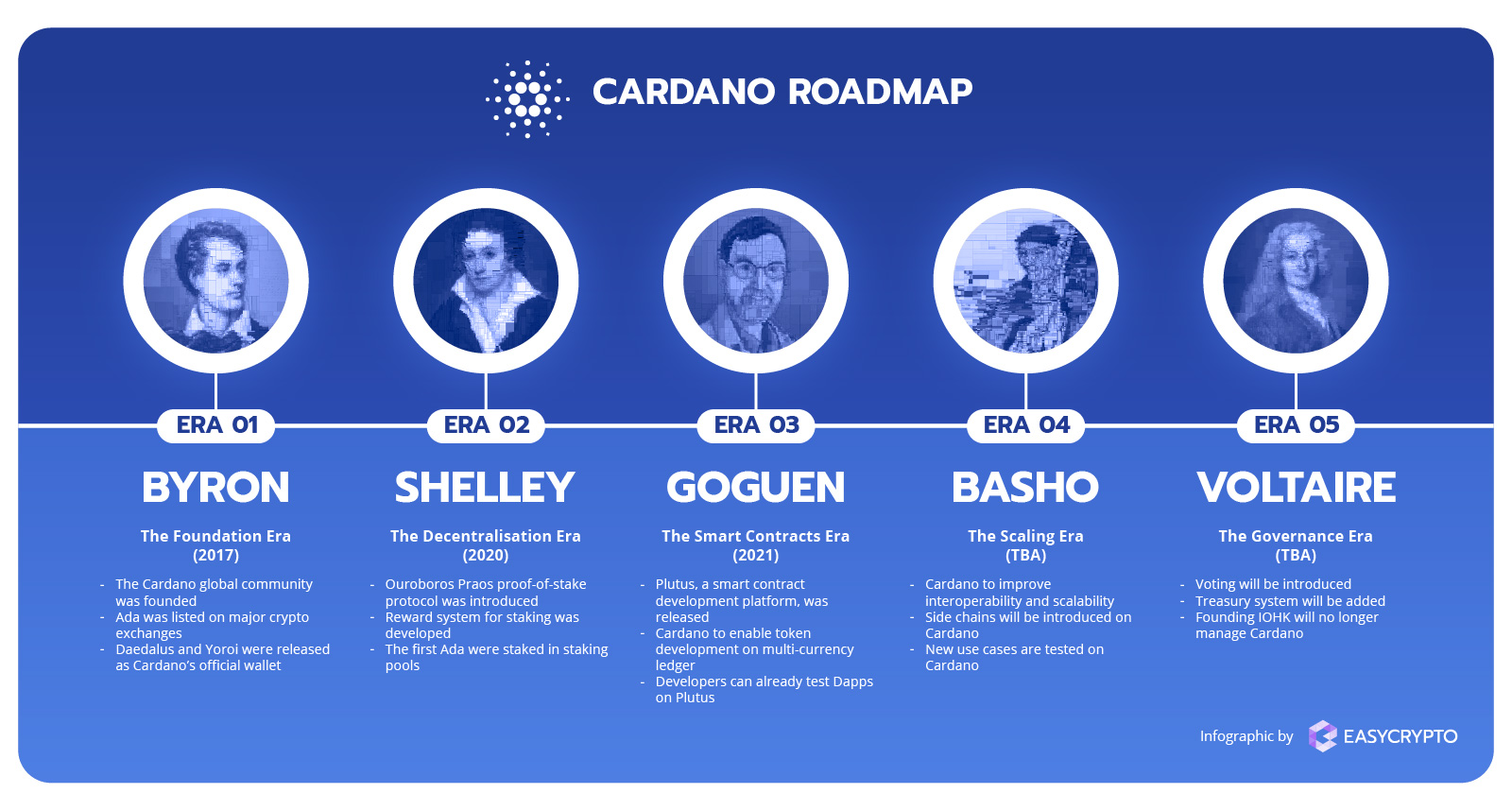Cardano's Roadmap, and its Transition into the Voltaire Era
Description
Discover the Future of Cardano: From Scaling, to Governance, and a Path towards Self-Sustainability! Join us on a captivating journey as we explore Cardano's roadmap, unveiling its groundbreaking eras and the revolutionary shift towards on-chain governance. Find out how ADA holders are empowered to shape the platform's destiny and why this platform is poised to redefine blockchain innovation.
A Path Towards Achieving Self-Sustainability through On-Chain Governance
Throughout this article be prepared to dive into Cardano's Roadmap, discuss what's on the horizon, and how they plan to achieve a self-sustainable platform through on-chain governance...

The founders of Cardano created an extensive and academically-driven plan for the development of the Cardano platform. This plan consists of five key phases, referred to as "eras," each representing specific functionalities that the blockchain will possess. Although there are five eras in total, Cardano's team is simultaneously working on all of them. Let's take a deeper look into these era's and discover what each of them aims to achieve.
Byro: Completion of this phase took three years. During this time, the Cardano team primarily focused on constructing the infrastructure and academic-oriented architecture of the core network to ensure its operational functionality. Additionally, the integration of the Daedalus Wallet and Yoroi Wallet into the Cardano blockchain was carried out, offering users a means to store their ADA tokens. Additionally, ADA was listed on the majority of major cryptocurrency exchanges.
Shelly: Decentralization plays a vital role in the Cardano blockchain, and this phase is entirely focused on it. In this era, the Cardano community actively participates in developing nodes to receive ADA rewards through staking in pools. The Delegation and Incentive Program is also introduced during this phase.
Goguen: The eagerly anticipated Smart Contract functionality is introduced, enabling developers and startups worldwide to implement their ideas on the Cardano blockchain, regardless of their preferred programming languages. In this phase, developers can create native tokens, manage multi-asset ledgers, and even issue stablecoins.
Basho: This phase focuses on rapidly scaling up the Cardano platform. With Cardano's implementation of Hydra onto the mainnet, the team has successfully concluded the Basho era. With the assistance of Hydra, transaction speeds could *theoretically* reach up to one million transactions per second (TPS), and Metadata and multi-chain functionalities are implemented within the Cardano blockchain during this phase. Although it's important to note that 1M TPS was actually a misconception. This idea may have been taken out of proportion when Hoskinson presented a theoretical situation where 1,000 Hydra heads, each with 1,000 TPS could lead to 1 million TPS. In truth, Hydra functions as a scalability protocol designed to enhance the transaction processing capabilities of Cardano. Much like the mystical creature, Hydra allows for creating multiple “heads” or subchains that can operate in parallel, processing transactions independently of each other. These subchains are referred to as Hydra heads.
As of April 28th, 2023 Cardano has officially transitioned into the Voltaire Era, referred to as the Governance Era. This is where we are today. The Voltaire era in Cardano represents a significant milestone in the platform's development. During this phase, the Cardano blockchain transitions towards a decentralized governance model, giving ADA holders the power to influence and make decisions regarding the future development and direction of the network as mentioned above. Voltaire will successfully usher us into an era that provides the final pieces required for the Cardano network to become a self-sustaining system.
Through the Voltaire era, Cardano aims to achieve on-chain governance, which means that the decision-making process is completely transferred to the ADA-holding community. This decentralized governance approach ensures that decisions are made in a transparent, fair, and community-driven manner. One of the key features of the Voltaire era is the introduction of a treasury system. This treasury is designed to support the sustainable development and growth of the Cardano ecosystem. It is funded by a portion of the transaction fees and will be managed by the ADA holders themselves.Through the treasury system, ADA holders have the opportunity to propose and vote on funding for various projects, initiatives, research, and development efforts within the Cardano ecosystem. This allows the community to allocate resources and prioritize initiatives that they believe will have a positive impact on the platform.
By involving the ADA holders in the decision-making process, the Voltaire era aims to ensure that the Cardano network evolves in a decentralized, inclusive, and collaborative manner. It provides a mechanism for stakeholders to actively participate and contribute to the platform's development and long-term sustainability. The Voltaire era on Cardano represents the shift towards on-chain governance, empowering ADA holders to have a say in the platform's future through voting on proposals and managing the ecosystem's treasury.